
As park attendance grows, so does trash
Ever heard the saying “What goes in must come out?”
With the massive amounts of garbage, such as bottles, cans or wrappers, that make its way into our national parks each year, it’s easier said than done.
The process of removing every single item of trash that enters these parks is extremely costly and for some even labor intensive. For visitors to truly enjoy these national parks and for the protection of our ecosystem, trash needs to be quickly disposed of, which requires a lot of money and man power.
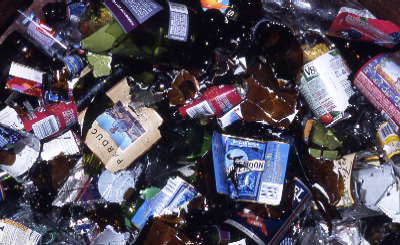 |
Glass bottles are left by visitors and eventually make their way to the Mammoth Recycle Center in Yellowstone National Park (Photo by Jim Peaco; courtesy of the National Park Service). |
The amount of money spent to maintain these parks could range anywhere from several thousand dollars to hundreds of thousands of dollars annually.
According to Jim Evanoff, environmental protection specialist for Yellowstone National Park, America’s first national park spends half a million dollars annually to remove 3,000 tons of trash that enters the park each year.
Denali National Park in Alaska spends about $75,000 a year to get rid of the 140 tons of garbage that visitors bring into the park.
South Florida’s Everglades National Park isn’t too far behind, spending roughly $80,000 annually to make sure 250,000 pounds of trash is securely removed from the park, according to Interpretation Ranger Samantha Edwards.
Even a remote park such as Michigan’s Isle Royale National Park, where it’s accessible only by boat or seaplane, spends more than $15,000 per year to remove the trash visitors bring into the isolated park.
Unfortunately for some parks, it is too difficult to keep pace with trash removal due to the high volume of trash and costs associated with its removal.
In the desert wilderness surrounding Organ Pipe Cactus National Monument in Arizona, the amount of trash that’s accumulated on a yearly basis is constantly fluctuating due to the large number of illegal immigrants crossing the border everyday and the waste they leave behind.
| Thousands of dollars are spent each year to maintain and preserve Everglades National Park (Photo courtesy of the National Park Service). |
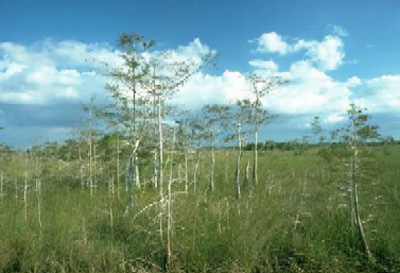 |
Question is where does it all the garbage go?
For the most part, trash is recycled and then transferred by waste management companies to a landfill or off site location, such as a compost facility.
“The majority of the trash found in the Everglades is either recycled or sold and then taken by Waste Management Inc. trucks,” said Edwards.
In similar fashion, Isle Royale also depends on Waste Management Inc. to transfer all of its trash outside of the park.
| A trash truck at one of the collection points of the South Rim Village of Grand Canyon National Park (Staff photo). | 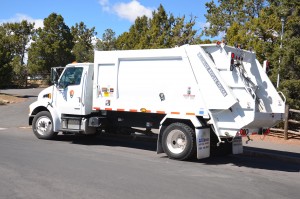 |
“Around 1996, we got rid of our incinerators and went to dumpsters and garbage removal,” said Liz Valencia, chief of interpretations for Isle Royal National Park in Michigan.
Shortly after the switch, the park signed an annual disposal contract with the waste removal company.
According to Adrienne Freeman, Yosemite National Park spokesperson, 40 percent of the post consumer waste found in the park is recycled and then the rest is shipped out. The amount of trash being collected from the park is so large, that it is delivered to three different landfills across different counties.
“All of the trash found in Yellowstone National Parks is transferred to a compost facility” said Evanoff.
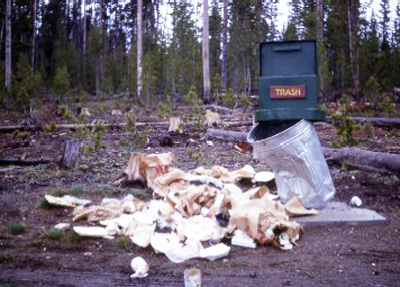 |
Garbage can destroyed by a grizzly bear inside Yellowstone National Park (Photo courtesy of the National Park Service). |
Despite the large amounts of trash removed annually from these parks, many claim that they have the situation under control.
Yet, the process of trash removal for several parks is still cumbersome to say the least.
For largely visited parks such as Yellowstone National Park, where millions of people visit each year, it’s pretty tough to keep tabs on all of the trash looming inside the park.
“It’s extremely difficult to remove all of the trash, because of the three million visitors we receive each year,” said Evanoff.
Since the park is inhabited by wild animals, including the scavenger grizzly bear, trash needs to be removed on an everyday basis to protect visitors from direct contact to the bear. Its known fact that grizzly bears tend to dabble into trash cans, so the park is constantly removing trash, making the process extremely labor intensive.
Even lesser visited parks such as Isle Royale, suffer similar consequences.
Due to Isle Royale’s isolated location where trash has to be transferred from the island to the mainland, the process is time consuming and tiresome.
| The isolation of Michigan’s Isle Royale National Park makes it challenging to remove trash throughout the park (Photo courtesy of the National Park Service). |
 |
“It’s a labor-intensive process because it has to be handled so many times,” said Valencia.
Yet, parks along the Mexican border such as Organ Pipe National Monument, find it not only labor intensive, but extremely difficult to remove all of the trash that makes it way into the park.
“There’s no way of getting to all of the corners of the park,” said Andy Fisher, chief of interpretation for Organ Pipe. “Some areas in the back country are very hard to get though so you would have to hike through the area, which isn’t easy.”
It’s also impossible to drive trucks into some of these areas, so bags containing trash need to be individually hauled out before it can be transferred to the Ajo, Ariz., dumping site, the local landfill nearby.
With the large number of illegal aliens and drug smugglers crossing the border everyday, it’s sometimes too dangerous to even enter certain areas and remove trash.
In fact, five years ago it was reported that the late Kris Eggle, former National Park Service ranger, was killed while patrolling the park by two men crossing the border.
The park depends heavily on volunteer groups to help remove all of the garbage found in the park. Even with the dangers surrounding the park, a total of 730 hours of volunteer work have been donated by others in efforts to maintain the park so far this year.
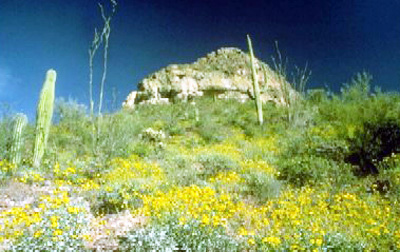 |
A backcountry hiking trail located inside Organ Pipe Cactus National Monument (Photo courtesy of the National Park Service). |
“Volunteers are our biggest aid,” said Fisher.
With the limited funding that many of the U.S. national parks receive, staff members rely on the help of volunteers to keep our parks clean, not only for our enjoyment, but for the animals’ sake as well.
“It’s great that there are people out there that actually care enough to help out, but there’s always more that can be done in the efforts of trash removal,” said Juan Gomez, building and utilities east district supervisor for Denali National Park. “There should definitely be more aid given to national parks.”

Comments are Closed